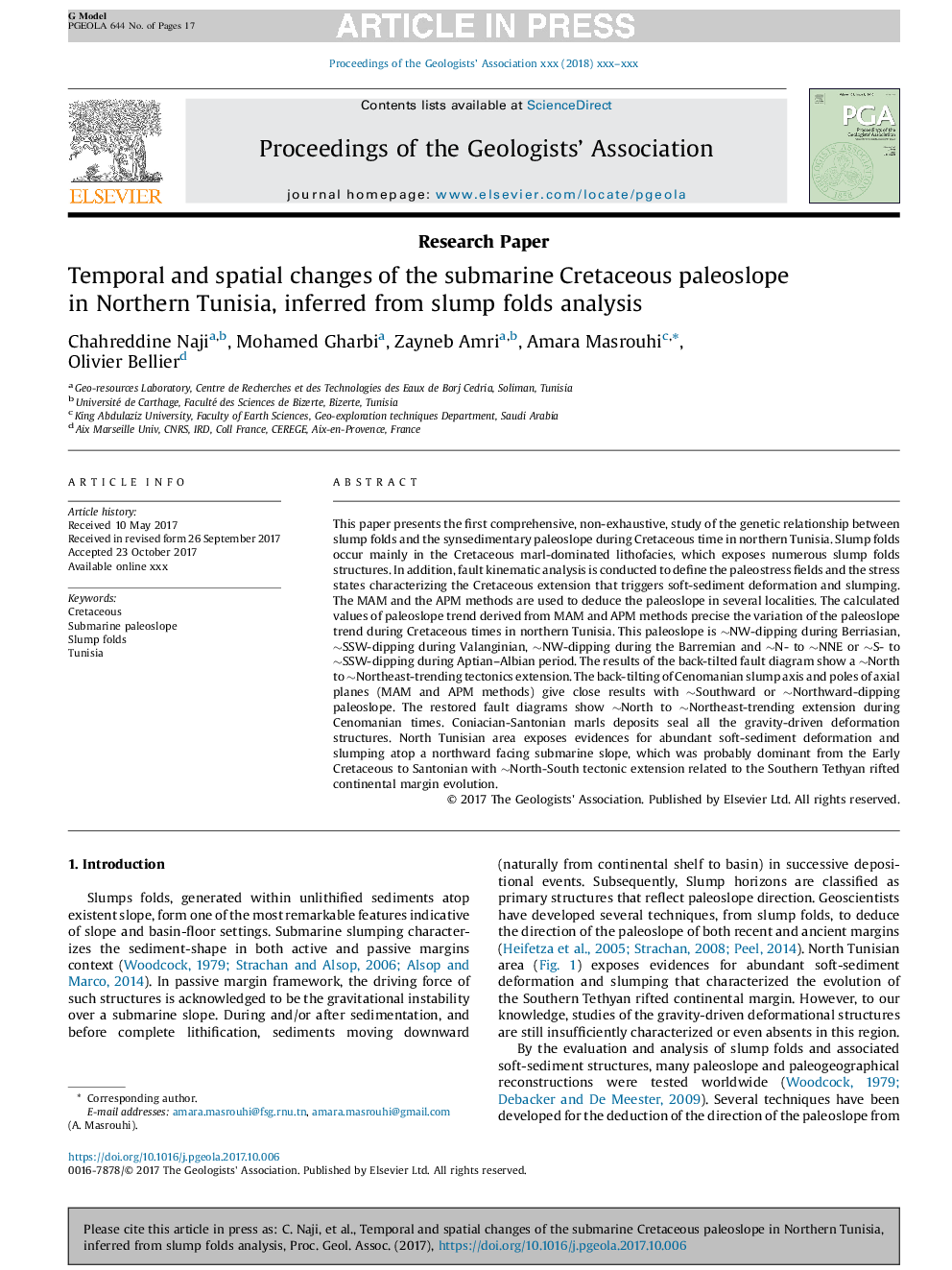| Article ID | Journal | Published Year | Pages | File Type |
|---|---|---|---|---|
| 8914605 | Proceedings of the Geologists' Association | 2018 | 17 Pages |
Abstract
This paper presents the first comprehensive, non-exhaustive, study of the genetic relationship between slump folds and the synsedimentary paleoslope during Cretaceous time in northern Tunisia. Slump folds occur mainly in the Cretaceous marl-dominated lithofacies, which exposes numerous slump folds structures. In addition, fault kinematic analysis is conducted to define the paleostress fields and the stress states characterizing the Cretaceous extension that triggers soft-sediment deformation and slumping. The MAM and the APM methods are used to deduce the paleoslope in several localities. The calculated values of paleoslope trend derived from MAM and APM methods precise the variation of the paleoslope trend during Cretaceous times in northern Tunisia. This paleoslope is â¼NW-dipping during Berriasian, â¼SSW-dipping during Valanginian, â¼NW-dipping during the Barremian and â¼N- to â¼NNE or â¼S- to â¼SSW-dipping during Aptian-Albian period. The results of the back-tilted fault diagram show a â¼North to â¼Northeast-trending tectonics extension. The back-tilting of Cenomanian slump axis and poles of axial planes (MAM and APM methods) give close results with â¼Southward or â¼Northward-dipping paleoslope. The restored fault diagrams show â¼North to â¼Northeast-trending extension during Cenomanian times. Coniacian-Santonian marls deposits seal all the gravity-driven deformation structures. North Tunisian area exposes evidences for abundant soft-sediment deformation and slumping atop a northward facing submarine slope, which was probably dominant from the Early Cretaceous to Santonian with â¼North-South tectonic extension related to the Southern Tethyan rifted continental margin evolution.
Keywords
Related Topics
Physical Sciences and Engineering
Earth and Planetary Sciences
Geology
Authors
Chahreddine Naji, Mohamed Gharbi, Zayneb Amri, Amara Masrouhi, Olivier Bellier,
